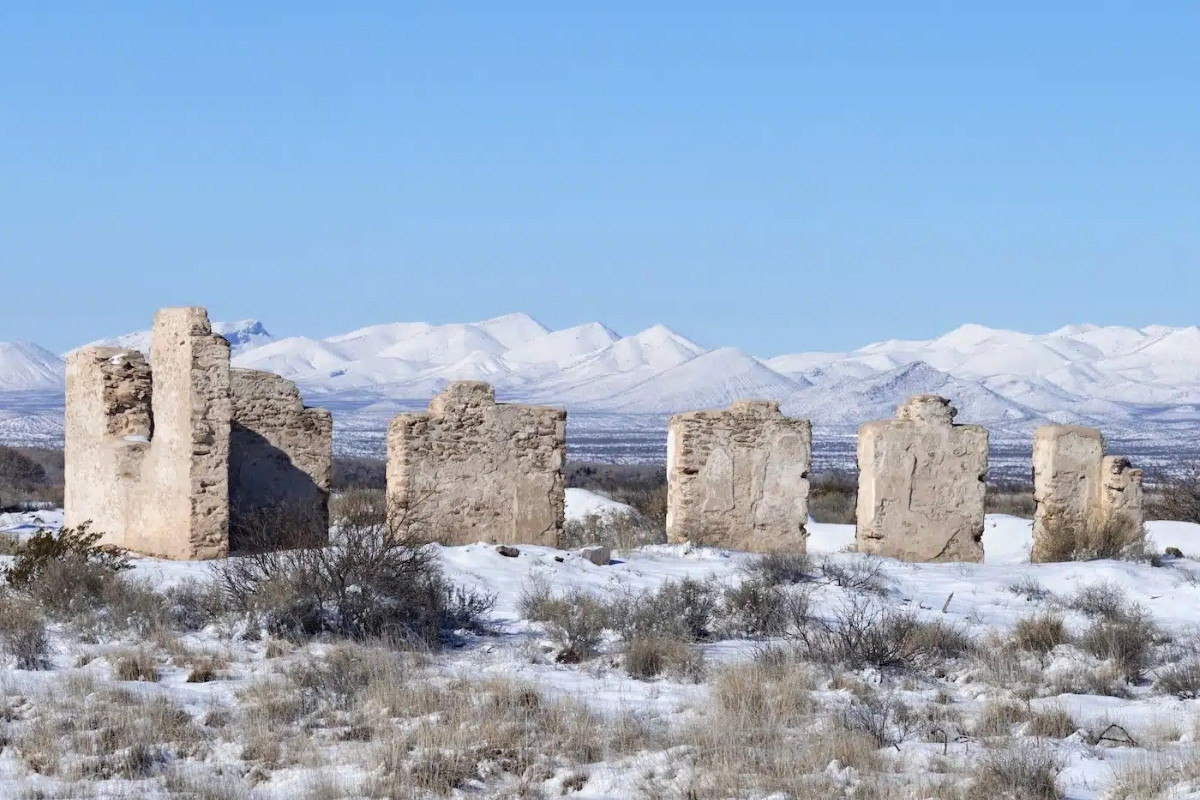Secrets Of New Mexico’s Ancient Stone Forts

Have you ever wondered about the ancient stone forts of New Mexico? These mysterious structures, scattered across the landscape, hold stories from centuries past. Built by indigenous peoples, these forts served as both defensive strongholds and community centers. Imagine walking among these ancient walls, feeling the history beneath your feet. Each stone tells a tale of survival, culture, and ingenuity. Whether you're a history buff or just love exploring unique sites, New Mexico's stone forts offer a fascinating glimpse into the past. Ready to uncover the secrets of these incredible structures? Let's dive into the rich history and significance of these ancient marvels.
Secrets of New Mexico's Ancient Stone Forts
New Mexico, with its rich history and stunning landscapes, hides many secrets. Among these are ancient stone forts, remnants of a time long past. These forts tell stories of ancient civilizations, battles, and survival. Let's uncover the secrets of some of these fascinating sites.
1. Chaco Canyon
Chaco Canyon, a UNESCO World Heritage Site, stands as a testament to the ingenuity of the Ancestral Puebloans. This site, with its massive stone structures, offers a glimpse into a civilization that thrived over a thousand years ago.
- Great Houses: These multi-storied buildings, constructed with precision, served as both residential and ceremonial centers.
- Kivas: Circular, subterranean rooms used for religious rituals and community gatherings.
- Pueblo Bonito: The largest and most famous of the Great Houses, showcasing advanced architectural skills.
2. Bandelier National Monument
Bandelier National Monument, located near Los Alamos, preserves the homes and territory of the Ancestral Puebloans. The stone structures here are carved into the cliffs, creating a unique and awe-inspiring landscape.
- Cliff Dwellings: Homes carved directly into the soft volcanic rock, providing shelter and protection.
- Long House: A series of connected dwellings that stretch along the cliff face.
- Alcove House: Accessible via ladders, this site offers a panoramic view of the surrounding area.
3. Pecos National Historical Park
Pecos National Historical Park, once a bustling trade center, now stands as a silent witness to the past. The stone ruins here tell tales of commerce, culture, and conflict.
- Pecos Pueblo: A large, multi-storied structure that housed hundreds of people.
- Mission Church: Built by Spanish missionaries, this church stands as a symbol of cultural exchange and conflict.
- Glorieta Pass Battlefield: Site of a significant Civil War battle, adding another layer to the area's rich history.
4. Aztec Ruins National Monument
Despite its name, Aztec Ruins National Monument has no connection to the Aztecs. Instead, it preserves the remains of a large Ancestral Puebloan community. The stone structures here are remarkably well-preserved.
- Great Kiva: A reconstructed ceremonial room that offers insight into the spiritual life of the inhabitants.
- West Ruin: A massive, multi-room structure that served as the community's center.
- Heritage Garden: Showcases traditional crops and farming techniques used by the Ancestral Puebloans.
5. Gila Cliff Dwellings
Gila Cliff Dwellings, located in the Gila National Forest, offers a glimpse into the lives of the Mogollon people. These stone structures, nestled in natural caves, provided shelter and security.
- Cliff Dwellings: A series of rooms built within five natural caves.
- Trail System: A network of trails that allows visitors to explore the site and its surroundings.
- Visitor Center: Provides educational exhibits and information about the Mogollon culture.
6. Salinas Pueblo Missions
Salinas Pueblo Missions National Monument preserves the ruins of three Spanish missions and the surrounding Puebloan villages. These stone structures tell a story of cultural interaction and adaptation.
- Gran Quivira: The largest of the three mission sites, featuring extensive ruins and a reconstructed kiva.
- Quarai: Known for its impressive church ruins and scenic location.
- Abó: Offers a glimpse into the daily life of the Puebloans and the impact of Spanish colonization.
7. El Morro National Monument
El Morro National Monument, also known as Inscription Rock, has been a landmark for centuries. The stone structures here are complemented by inscriptions left by travelers over the years.
- Atsinna Pueblo: Ruins of a large Puebloan village located atop the mesa.
- Inscription Rock: Features carvings and inscriptions from Spanish explorers, American pioneers, and Native Americans.
- Pool: A natural water source that made El Morro a vital stop for travelers.
8. Fort Union National Monument
Fort Union National Monument, though not as ancient as the other sites, played a crucial role in the history of the American Southwest. The stone ruins here tell a story of military strategy and frontier life.
- Third Fort Union: The largest and most complex of the three forts built on this site.
- Santa Fe Trail: Fort Union served as a key supply depot along this historic trade route.
- Visitor Center: Offers exhibits and information about the fort's history and significance.
Discovering New Mexico's Ancient Stone Forts
New Mexico's ancient stone forts offer a glimpse into the past. These structures, built by indigenous peoples, tell stories of survival, culture, and ingenuity. Visiting these sites, like the Chaco Canyon or the Gila Cliff Dwellings, connects us to history. Each fort has unique features, from intricate masonry to strategic locations. Exploring these forts, you can imagine the lives of those who built them. The beauty of the surrounding landscapes adds to the experience. Whether you're a history buff or just love adventure, these forts are worth the trip. They remind us of the rich heritage and resilience of the people who once called this land home. So, pack your bags, grab a map, and set out to uncover the secrets of New Mexico's ancient stone forts.

